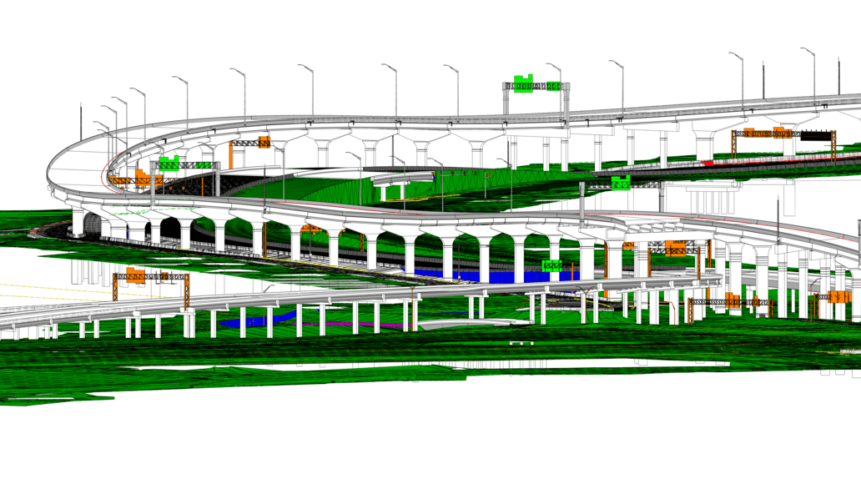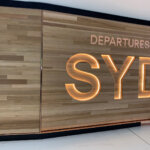Infrastructure digital twin pioneers lauded at Going Digital awards

Glamor is not the first word that comes to mind when we think of infrastructure projects. The roads, railways, bridges, construction projects and other elements of the built environment that comprise the furniture of our existence are thought of as ‘just’ what they are, and those who build them or design them are often nameless to the wider world.
But in the modern world of digital twins and technologically-enhanced infrastructure projects, that simply won’t pass. Which is why Bentley Systems, the power behind infrastructure project tools like iTwin, Synchro, and ProjectWise, runs its annual Going Digital Awards.
The judging process
The awards (which for the last two years have been run remotely, in line with Covid guidance) seek out and celebrate the projects from around the world that most innovatively use advanced technology like digital twins or reality modelling to achieve a pressing infrastructure goal. The jury is at least as independent as any other you’ll find, and the projects that make it to the final round are selected from submissions and recommendations from all over the world. After entries are sifted for merit, the final three projects in 12 categories make presentations to the jury and invited attendees at the Bentley Year In Innovation conference, and a final deliberation takes place.
This year, the competition was tough, as there were 318 separate submissions from 47 countries, with nominations coming from more than 180 user organizations.
The top three project teams in each of the 12 categories gathered, this time in three dimensions, in London, UK, to hear which would be successful – while it may not exactly be the Oscars, there’s heft and weight to being named a Going Digital award winner, as not only are there usually investors in the room that might well sweeten the night for any project they especially appreciate, but the quest for further funding or the next interesting project is likely to be easier for an award-winner.
It’s worth noting that there are not a huge number of awards available to infrastructure designers and builders, so the added kudos of winning a Going Digital award goes a little further than awards in more widely celebrated fields.
This year, the awards celebrated significant achievements in a wide range of infrastructure applications.
The winners
The winners in each of the first five categories were:
Bridges and tunnels
Ferrovial Construction, for its work on IH35 Nex Central station.
The challenge was to provide extra capacity to the I-35 Northeast Expansion (NEX) corridor for the Texas Department of Transportation. That demanded an additional viaduct, with three extra lanes of capacity in each direction. When broken down, that’s 21.8 miles of viaduct, two interchanges, and more piping for the drainage system.
Ferrovial used ProjectWise and the iTwin platform to improve information exchange and develop a digital twin. Clash detection got rid of 3,530 data collisions, and the Ferrovial team solved visibility issues and gave the construction team precise material information, which saved them both time and costs.
Construction
Acciona, for its work on removing dangerous level crossings from a railway network in Melbourne, Australia.
Melbourne is removing level crossings from its rail network, and Acciona was brought in to remove 20 level crossing and construct 13 new stations along the city’s Frankston Line.
Except that the work was in a congested area, with many stakeholders to annoy if the work went badly or caused disruption. And, while it was there, Acciona had to upgrade its digital approach to a more seamless integrated solution. No pressure.
Acciona used the Synchro 4D collaborative modelling and construction simulation software, creating a digital twin that let them reduce their staging time by 67%, and their drafting requests by around 88%. The project was delivered on time and with minimal disruption to either passengers or locals.
Enterprise engineering
Mott MacDonald, for its work creating a smart object library for the UK Environment Agency.
The UK’s national Environment Agency needed a library of efficiently designed and managed assets.
Mott MacDonald created a smart object library, which both the Agency and its supply chain partners could access. Challenges with securing cross-organization collaboration and ensuring the best parametric functionality for each smart object were overcome by creating a comprehensive, interoperable data-connected solution, hosting multiple file formats and serving several project disciplines and suppliers. By reusing digital content, Mott MacDonald saved the Agency at least £79,000 (and ROI is only expected to increase as the library incorporated more smart objects and becomes accessible to more users).
Facilities, campuses and cities
Sydney Airport, for its creation of Maps@Syd.
Sydney Airport, Australia, spans 906 hectares and includes three runways, three terminals, and over 400 buildings. A team there used digital mapping and data-layering technologies to create a cloud-based self-service portal to support facilities planning, operations, and smart maintenance by integrating spatial and survey information. Then they made it accessible by all staff across the organization.
This integration provides real-time collaboration and 3D viewing capabilities for planning, auditing, and facilities management. Having access to an open digital environment increased efficiencies, improved productivity and the quality of deliverables, and reduced costs and resource hours across all departments.
Geoprofessional
Mott MacDonald, for its work driving efficiency and sustainability through material reuse in Birmingham, UK.
The 90-kilometer HS2 Phase 1 rail route has around 25 million cubic meters of material earmarked for excavation, making the volume of earthworks one of the largest sources of carbon emissions. The integrated project team (IPT) needed to identify mass haul efficiencies that could minimize wasted material and help HS2 achieve its target of 50% reduction in carbon emissions.
IPT developed a collaborative geoBIM assessment technique based on the 3D spatial assessment of ground investigation data within the proposed earthworks excavations. Modeling specific geometric earthwork profiles optimized mass haul movements during construction.
All of these worthy winners represent the tip of iceberg of phenomenal talent and projects to transform the built environment as we know it, using data amalgamation and digital twins to minimize disruption, increase knowledge and understanding, reduce costs and impacts, and save money. Giving the right tools to imaginative, talented infrastructure project designers results in a better, smarter built environment for us all.
In Part 2, we’ll look at the remaining seven categories and winners at this year’s Going Digital awards.











